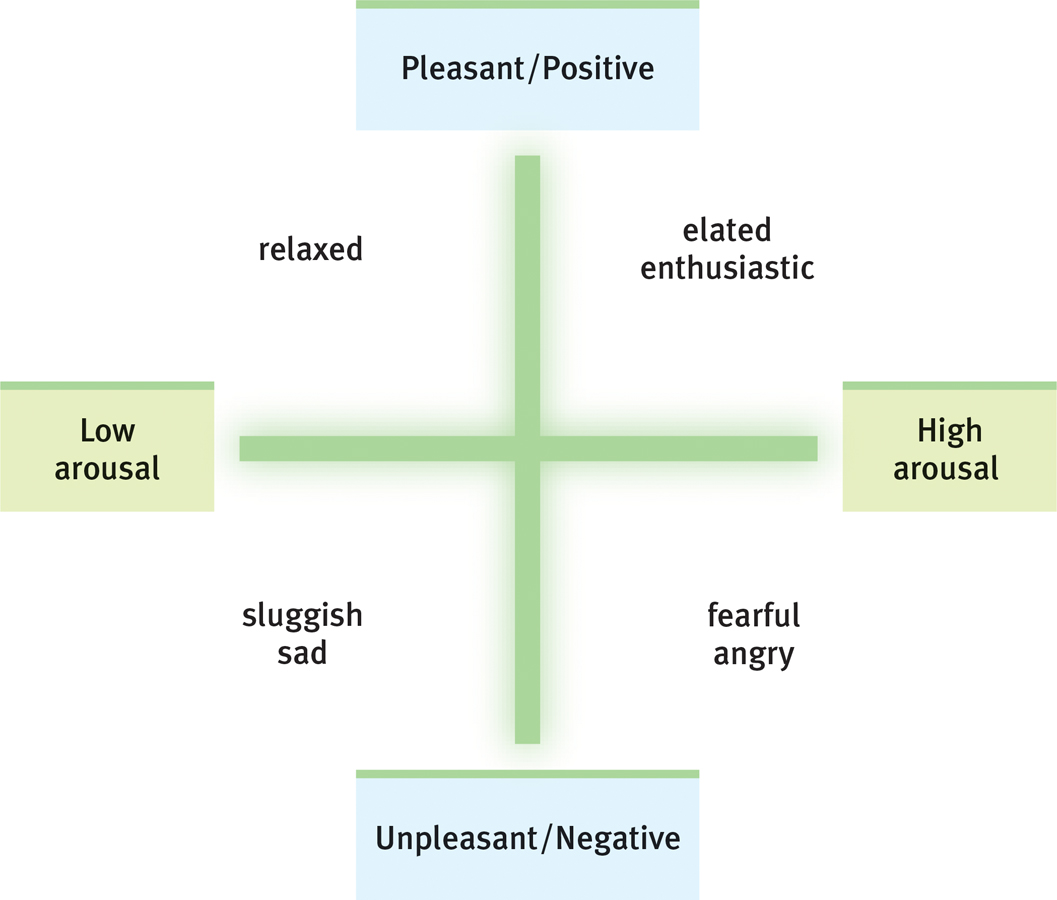Module 39 Introduction
 Experiencing Emotion
Experiencing Emotion
39-
HOW MANY DISTINCT EMOTIONS ARE there? Carroll Izard (1977) isolated 10 basic emotions (joy, interest-

 Figure 39.1
Figure 39.1Infants’ naturally occurring emotions To identify the emotions present from birth, Carroll Izard analyzed the facial expressions of infants.
The ingredients of emotion include not only physiology and expressive behavior but also our conscious experience. Across the world, people place emotional experience along the two dimensions illustrated in FIGURE 39.2—positive-

 Figure 39.2
Figure 39.2Two dimensions of emotion James Russell, David Watson, Auke Tellegen, and others have described emotions as variations on two dimensions—
Let’s take a closer look at anger and happiness. What functions do they serve? What influences our experience of each?